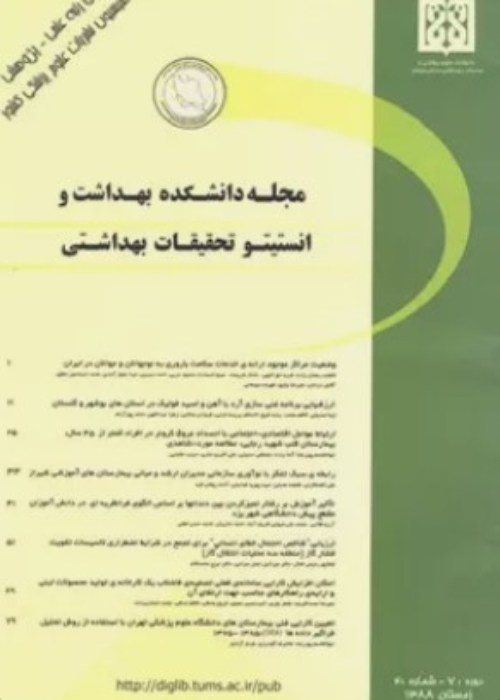Factors influencing the behavior of female-workers in the reproductive age regarding breast and cervical cancer screening based on the Integrated Model of Planned Behavior and Self-Efficacy: A qualitative approach
Breast and cervical cancer screening is considered a health promotion behavior, influenced by complex factors. The theory of planned behavior provides a useful framework for predicting and understanding the health behavior and designing appropriate educational interventions. Integrating this theory with self-efficacy will increase its predictive value. The objective of this qualitative research project was to understand the factors influencing the behavior of breast and cervical cancer screening of female-workers as a base for future educational planning.
This was a qualitative approach research based on the Integrated Model of Planned Behavior and Self-Efficacy. Seventy 20-45 year-old women working in industrial plants in Abbasabad, Pakdasht, selected by purposeful sampling with maximum diversity participated, in 10 groups of 7 each, in focus-group discussions, in which they discussed their experience regarding factors influencing the behavior of breast and cervical cancer screening. Data were collected and their validity, conformability, transferability and dependability confirmed. For data analysis the conventional method of content analysis was used.
The female workers had a low knowledge and attitude concerning the behavior of breast and cervical cancer screening. Attaching importance to comments given by the family members, especially the husband, and preference of treatment to prevention of disease in the society at large were the subjective norms of the female workers. The most important barriers to participating in screening programs were lack of knowledge, depression, fatigue, embarrassment and fear of examinations, fear of being sick, poor quality of services and lack of attention to privacy in health centers, limited access to health centers, and costs of tests. The female workers had a low self-efficacy for planning and overcoming barriers. Most of them had not had screening tests and had no intention of doing their screening tests in the following three month.
The following measures are recommended: designing and implementing specific educational programs in workplaces for female-workers aiming at increasing their awareness and positive attitudes towards breast and cervical cancer screening; designing and implementing educational/training programs for families, employers and planners to increase their knowledge and attitude; and facilitating women's access to health centers in industrial estates.
- حق عضویت دریافتی صرف حمایت از نشریات عضو و نگهداری، تکمیل و توسعه مگیران میشود.
- پرداخت حق اشتراک و دانلود مقالات اجازه بازنشر آن در سایر رسانههای چاپی و دیجیتال را به کاربر نمیدهد.



